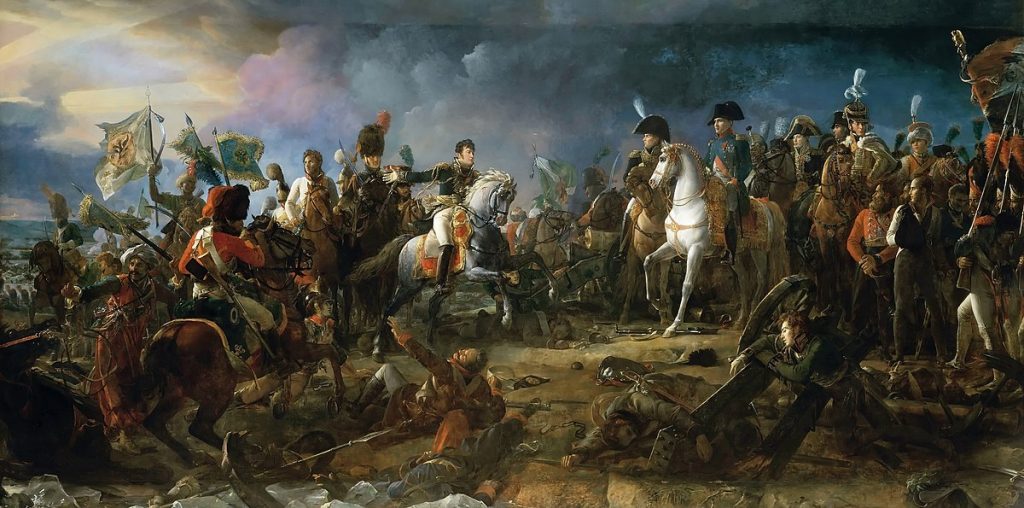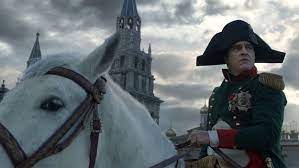
Ridley Scott’s recent spectacular biopic Napoleon is but the latest depiction, following many portraits on the screen of the revolutionary general and self-crowned Emperor. From his beginnings as a humble Corsican soldier to his heroic defeat at Waterloo, Napoleon Bonaparte’s life is a fascinating story that has long appealed to painters as well as filmmakers, and is a good way to examine the hero archetype in art and film.
.
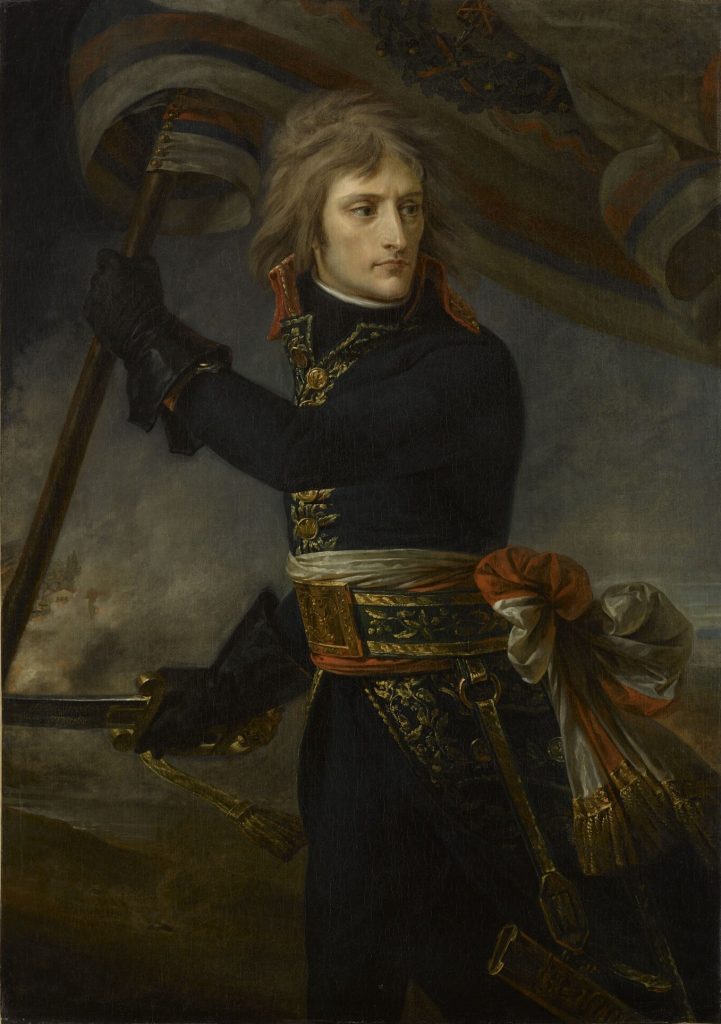
In his film, Scott borrows heavily from the paintings of the great Antoine-Jean Gros, the painter who accompanied Bonaparte on his campaign and painted the battles in unflinching detail. Gros was a painter who did not only want to capture the heroism of Bonaparte but also the context and the struggle of his life and work.
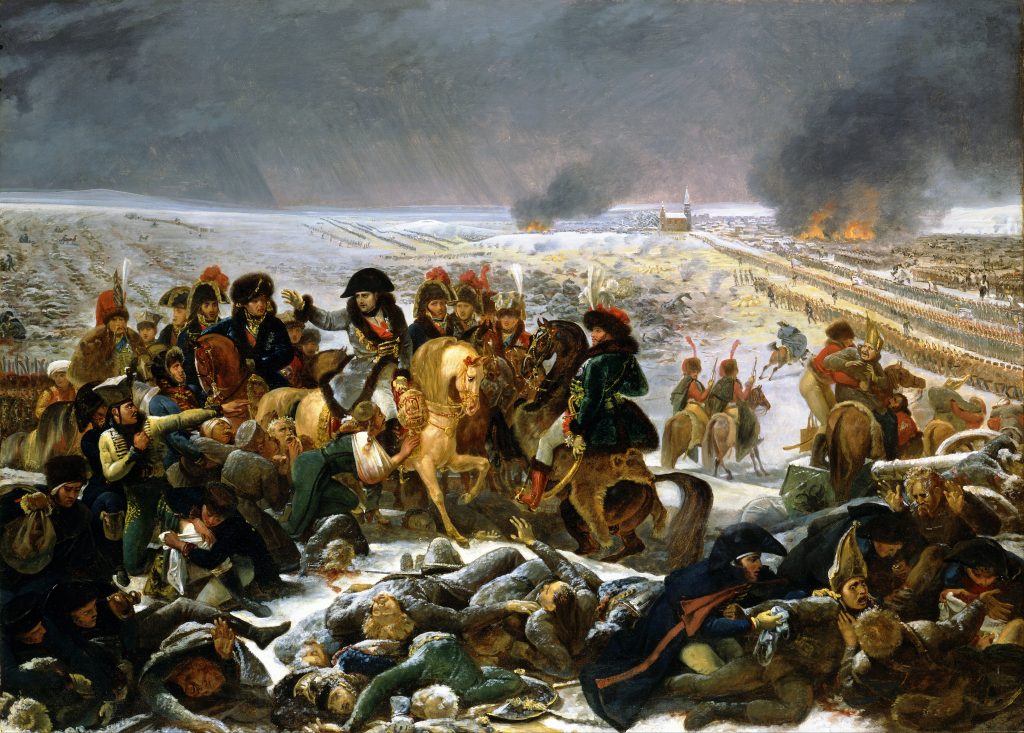
(for another analysis of Gros and film see this post)
However, to understand the challenges of depicting real life heroes on screen we need to take a deeper look at how heroes are depicted in art history.
Heroic images of mythical beings and historical paintings were regarded as the pinnacle of artistic achievement. History painting has always shown heroic exploits, battles, and significant events.
Despite changing heroes, the heroic form and gesture remain recognisable in visual culture.
The “hero” model dates back to ancient epics like Gilgamesh, the Iliad, and the Norse sagas. According to Joseph Campbell’s The Hero with 1000 Faces, similar stories of heroism exist throughout history and across societies. Throughout history, artists have portrayed heroes and heroic acts.
Paintings depict heroic figures rather than realistic ones.
Human culture revolves around heroic characters. They are constantly present, but their appearance may alter. Carl Jung established the concept of archetypes, or “primordial images,” which govern human behaviour from birth. The hero archetype is one of these. Greek mythical characters were the most commonly depicted in paintings, but biblical heroes like David also made frequent appearances.
One issue with portraying biblical people as heroes is that Jesus, the most heroic Christian character, does not fit the hero paradigm. Greek mythology was a more reliable source of painting inspiration for ‘heroic’ subjects.
Hercules, the legendary hero, has been depicted in art throughout history, from Greek friezes and vases to Renaissance paintings and modern film.
Titian’s painting of Perseus and Andromeda depicts the hero diving into the water to save the woman from a terrifying sea monster. The hero character is distinguished by their mortal or half-mortal status, making their feats even more impressive.
The distinction between a Greek deity and a heroic character is that the former is expected to be great and powerful, and basically just fulfils their role as a god. In contrast, the hero must develop heroic qualities. Perseus definitely fits that bill.

The cinema, especially during Hollywood’s golden period, quickly embraced the old-fashioned concept of hero. Heroes always seem to be popular; just look at the success of films like “Alien” with Ripley and “The Matrix” with Neo.
In The Matrix, Neo’s sidekick Trinity plays a character reminiscent of the Greek goddesses who aid and eventually fall in love with heroes such as Odysseus and Perseus. The formidable goddess Diana the Huntress, also known as Artemis in Greek, was a common motif in Greco-Roman sculpture, and Trinity incorporates aspects of her.
The indelible image of the hero
The enduring image of Napoleon Bonaparte is the one by Jacques-Louis David: Napoleon Crossing the Alps.
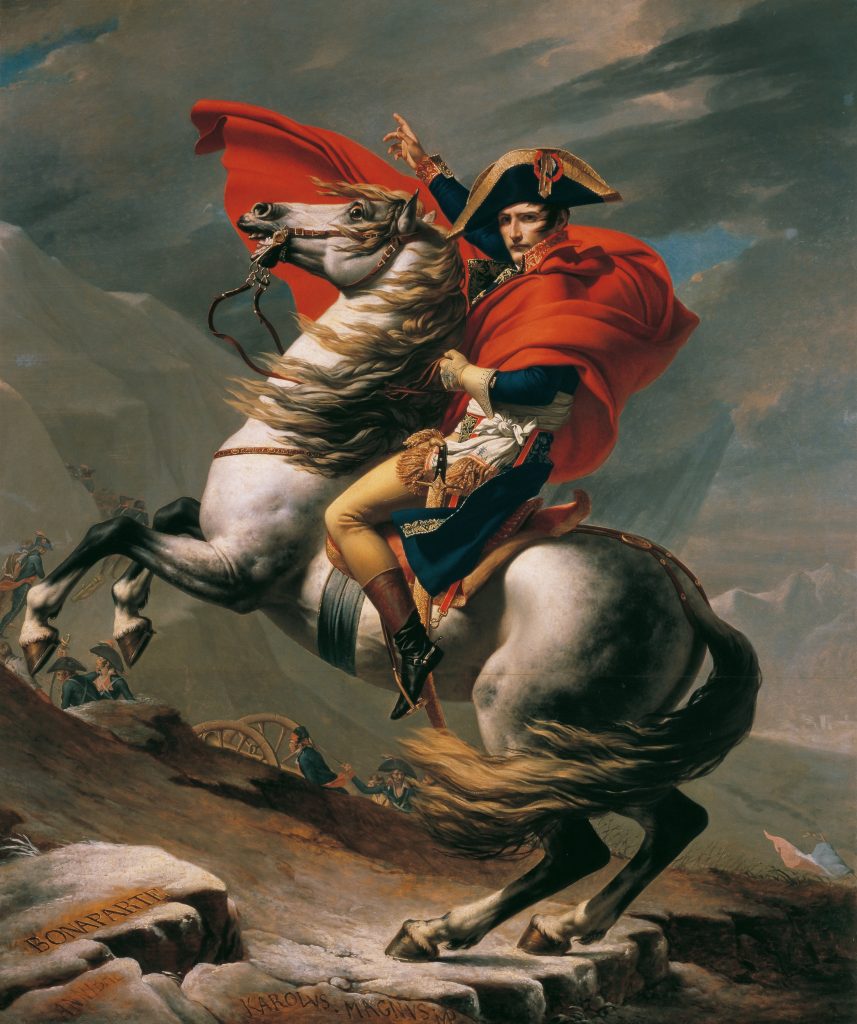
Regardless of how radical the French Revolution became Frenchman Jacques-Louis David remained a devoted supporter of the cause. One of the most significant paintings from the French Revolution, David’s The Death of Marat depicts the lifeless body of the murdered revolutionary, a close friend of David, lying in a bathtub. But David changed sides when the radical camp lost and Napoleon came to power.
David became Napoleon’s official court painter and painted his coronation after the French leader proclaimed himself emperor and entrenched his power.
David was actually offered the position of court painter by the restored King Louis XVIII, despite widespread belief that he would be disgraced following Napoleon’s downfall. The artist stayed loyal to his revolutionary beliefs and declined.
It turns out that Napoleon actually rode a mule across the Alps, which is a lot more appropriate animal for a treacherous and tough trek like this. But this doesn’t look heroic, so David has depicted the general riding a magnificent horse that is standing on the brink of a cliff.
Looking straight forward, towards victory and triumph, the resolute general keeps his poise. The army advances in the backdrop, with the tricoleur in the lower right and the war machines being carried up the mountainside. Impressive composition: Bonaparte stands tall in the middle of the painting, and a powerful diagonal connects the horse and the mountain, which extends from the upper left to the lower right.
The diagonal layout is what draws the eye first and gives off a powerful impression of drama and peril.
The forceful alpine winds that the army must contend with are symbolised by the billowing cape, mane, and tail of the horse, which give the impression of wind blowing from behind. But pay attention to the wind: the very winds are driving the general, the horse, and the army onwards to triumph. Even the gods are on Bonaparte’s side, according to David.
Because the horse couldn’t have possibly reared up like that and Napoleon is dressed in a formal ceremonial costume, this heroic painting is blatantly, purposefully exaggerated.
Nearly half a century after Bonaparte’s death, in 1850, artist Paul Delaroche recreated the epic in a more realistic style. Even in the midst of victory, Delaroche’s Napoleon, atop his mule, seems wise and reflective, as if he could already see his eventual downfall.
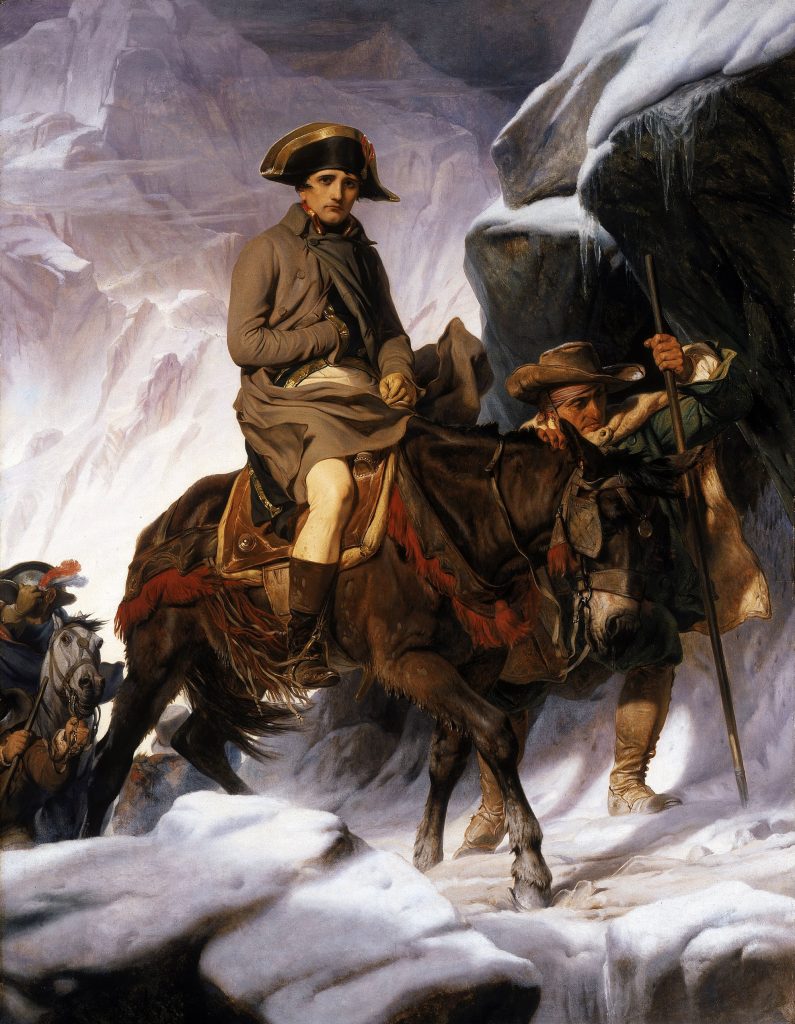
David’s picture solidified Napoleon’s reputation as a remarkable and heroic leader, and it also proved that heroes might exist outside of mythology. Delaroche’s portrait reminds us that even heroes are human and being a world-winning general is really hard work.
More about Gros https://www.apollo-magazine.com/antoine-jean-gros-drawings-louvre/
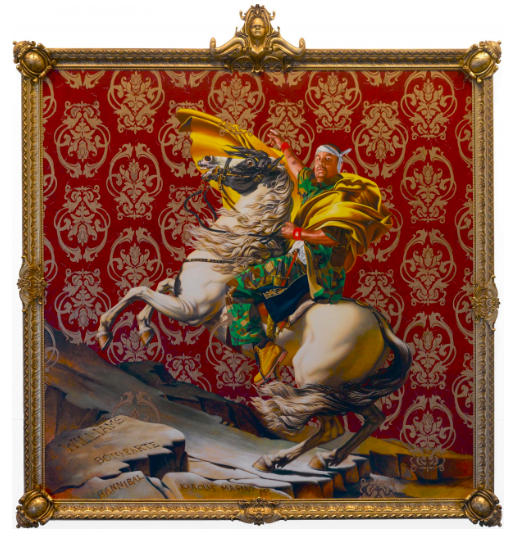
Contemporary artist Kehinde Wiley produced a painting of a young Black man astride a horse in 2005 titled Napoleon Leading the Army over the Alps. David’s painting is the inspiration. Both David’s and Wiley’s paintings have many of the same basic compositional ideas though the backdrop of the contemporary artwork is ornamental, as opposed to the scenic backdrop of David’s. The hero archetype in art and film can take many forms. Check out some of the other movies that depict Napoleon Bonaparte.
FURTHER VIEWING
Films about Napoleon Bonaparte: how “heroic” is he?
Napoleon (1927), dir. Abel Gance, DP Jules Kruger; one of the greatest history films, owing much to both David and Delaroche
Désirée (1954), dir. Henry Koster, DP Milton R. Krasner; a different approach, focusing on the relationship between Bonaparte (Marlon Brando) and Désirée Clary (Jean Simmons)
Waterloo (1970), dir. Sergei Bondarchuk, DP Armando Nannuzzi; Rode Steiger’s world-weary General is a tour de force performance, as is the depiction of the charge of the Scots Greys.
Adieu Bonaparte dir Yousseff Chaine; Bonaparte is a secondary character in this film about the conquest of Egypt, but he is played very well by Patrice Chereau – well worth seeing.
Napoleon (2023) dir. Ridley Scott DP Dariusz Wolski

